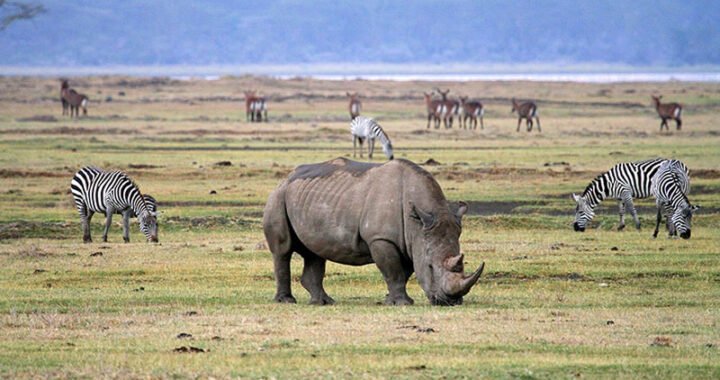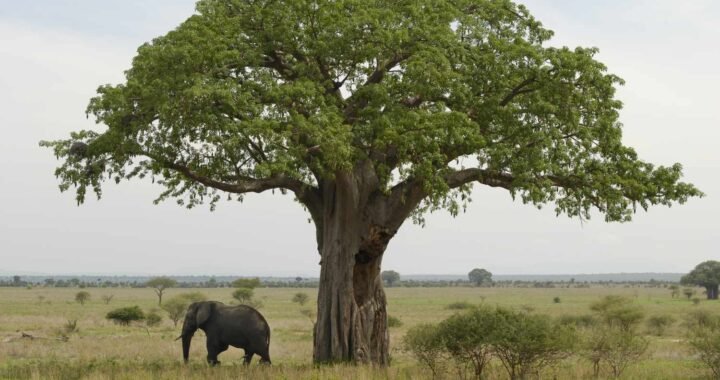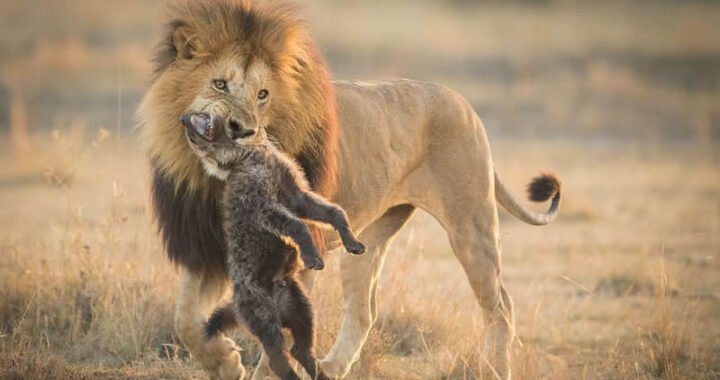Masai Mara National Reserve is the world cup of wildlife. Located in the southern parts of Kenya at the border of Tanzania, Masai Mara National Reserve is a one-stop center for wildlife and safari game drives.
Masai Mara National Reserve has been in existence for several years. It was originally established in 1961 covering an area of approximately 520 square kilometers. In 1994 the conservation area received a National Reserve status and saw its land expanded to the neighboring communities to the present size of approximately 1510 square kilometers.
Part of the Masai Mara Reserve is owned by the local members of the community. Lodges lease this land and the revenue collected directly or indirectly goes back to the communities. This is a win-win situation for wildlife and the neighboring Masai people.
Over the past decades, the Masai Mara Reserve has attracted millions of travelers from all corners of the world to make their safari dreams come true. There is no doubt that Masai Mara Reserve is the best wildlife safari destination in Africa. The Reserve is home to millions of wildebeest, zebras, antelopes, buffaloes, and other herbivores. Masai Mara Reserve is also home to some of the rare hunters like lions, spotted hyenas, wild dogs, leopards, and Nile crocodiles, to mention but a few.
How are the terrain and landscape of Masai Mara Reserve?
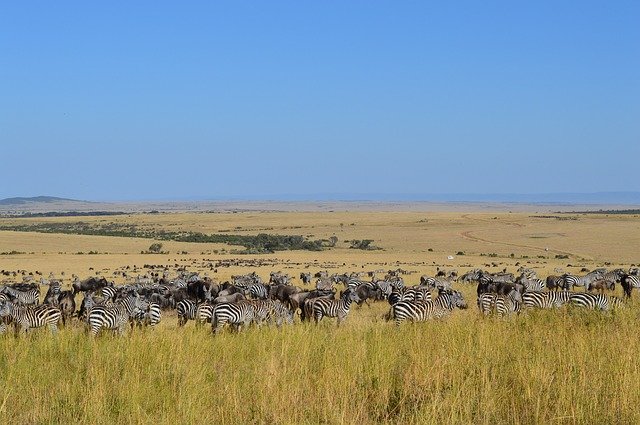
Named after the Masai word “Spotted”, Masai Mara National Reserve is a true reflection of its name.
Once you visit Masai Mara National Reserve, you will understand why it was named so. You will see scattered short trees spanning the extensive savannah plains of Kenya. Masai Mara National Reserve is home to tall grasses that shake uniformly in response to the slowly blowing winds, especially during the dry seasons.
There are some raised plateaus in the park which create a raised elevation for one to spot the endless savannah plains of Masai Mara. Predators like lions use such raised terrain to their advantage while hunting.
Although the riverbanks of the area’s three rivers (The Sand, Talek River, and Mara River) are lined with shrubs and trees, most of the reserve is made up of open grassland spotted by an occasional flat-topped acacia tree.
Wildebeest Migration in Masai Mara National Reserve
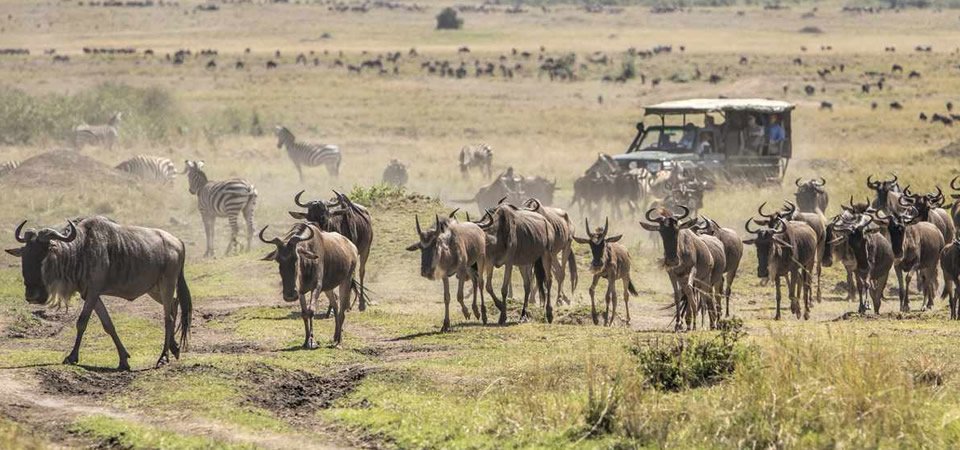
The Masai Mara Reserve National Reserve is famous for being home to the world’s greatest animal migration – the wildebeest migration.
Taking a trip to the Mara Reserve is a perfect opportunity to discover the hidden treasures of the reserve.
What is wildebeest migration in Kenya?
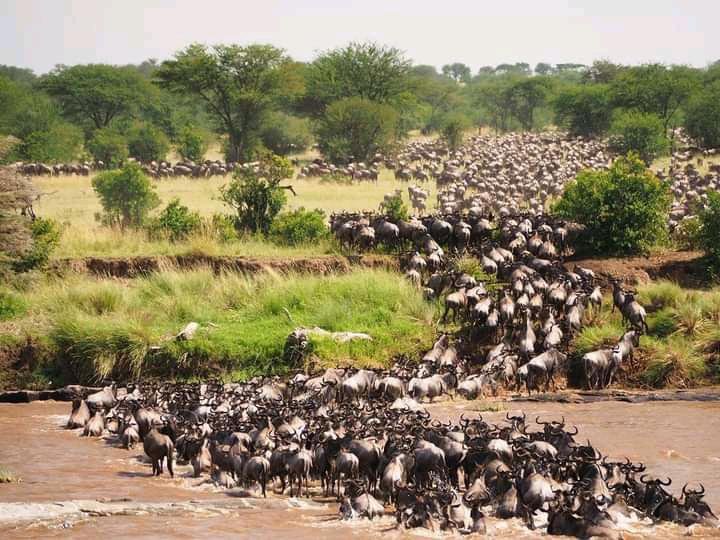
Wildebeest migration is the animal movement of millions of animals (wildebeests, zebras, buffaloes, and other herbivores) in search of water and greener pastures. Wildebeests follow their instincts from Serengeti National Park in Tanzania to Kenya’s Masai Mara Game Reserve in Kenya. During the migration, herbivores are always accompanied by predators like lions, spotted hyenas, wild dogs, cheetahs, and leopards.
It is during your game drive in the Mara Reserve that you will encounter a pride of lions hunting down a buffalo. What an exceptional experience! During the migration, an epic event happens at the Mara River while animals cross from one side of the river to the other. Here, it takes courage to cross the crocodile-invested Mara River. It is a game of life and death; you witness the common rule of the jungle that states that; only the strong ones survive or survive for the fittest.
What to do in the Masai Mara National Reserve? Activities in the Mara Reserve
A visit to the Masai Mara National Reserve is a rewarding safari adventure. It will introduce you to the great wildlife encounters of Kenya. If you are planning a trip to Kenya or a safari to Africa, Masai Mara National Reserve should not be missed on your travel list.
Below are some of the activities that tourists or travelers can do on their safari or tour of the Masai Mara National Reserve in Kenya;
Wildlife and safari game drives

If you are looking for a place to have the best wildlife and game drives in Africa, Masai Mara National Reserve should be top of your list. A game drive in the Masai Mara Reserve will introduce you to hundreds of animal species.
These include; cheetah, lion, leopard, elephant, giraffe, warthog, buffalo, zebra, Thomson gazelle, kudu, waterbuck, bushbuck, to mention but a few. Game drives in the Masai Mara National Park start in the morning and afternoon hours.
For an extensive exploration of the park, we recommend you take on a full-day game drive. This will help you explore the Reserve at length. You will visit the Mara River and witness the wildebeests crossing the river while battling with crocodiles.
Birding tours in Masai Mara National Reserve

One of the best birding spots in Africa is the Masai Mara National Reserve in Kenya.
The area is home to multiple bird species some of which are Rift Valley endemic species.
It is important to note that some of the birds in the Mara Reserve are migratory and can thus be spotted during particular seasons.
Tell us about your birding needs for a great experience in Kenya or Masai Mara National Reserve.
Cultural tours and community safaris in Masai Mara National Reserve
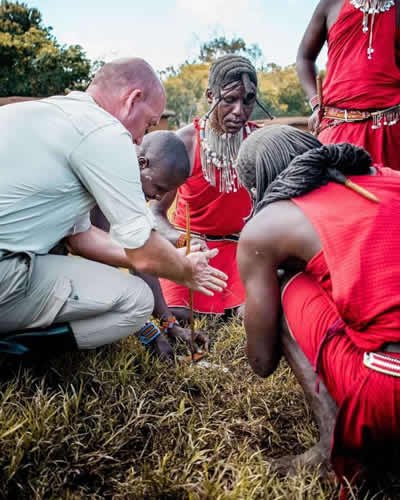
Kenya has the best cultural tours in Africa. On your Kenya safari or Kenya wildebeest migration tour, you will visit the Masai Cultural Villages. Here you will dive into the traditional life and customs of the Masai people.
The Masai people are one of the ancient and indigenous tribes of Africa.
They harmoniously co-exist with wildlife and they are majorly cattle keepers.
Take part in their activities like hunting and cattle rearing. You may buy souvenirs from the craft shops.
Where to stay in Masai Mara National Reserve? Accommodation in Masai Mara
Where to stay on your tour to Masai Mara Reserve should not worry you. There are several accommodation facilities like lodges and tented camps across the different sectors of the reserve. These range from budget to mid-range to luxury. Some of the lodges include; Mara Sopa Lodge, Serena Safari Lodge, Elewana Sand River Camp, etc.
What is the best time to visit Masai Mara National Reserve?
The dry months of June to September and December are considered the best time to tour Masai Mara Reserve. This is a period of less rain hence animals can easily be spotted at the water sources. Additionally, the Mara River crossing usually happens from July to August.

